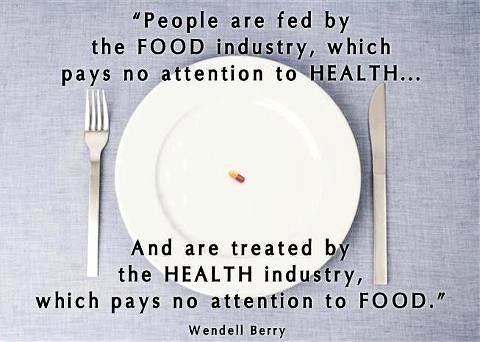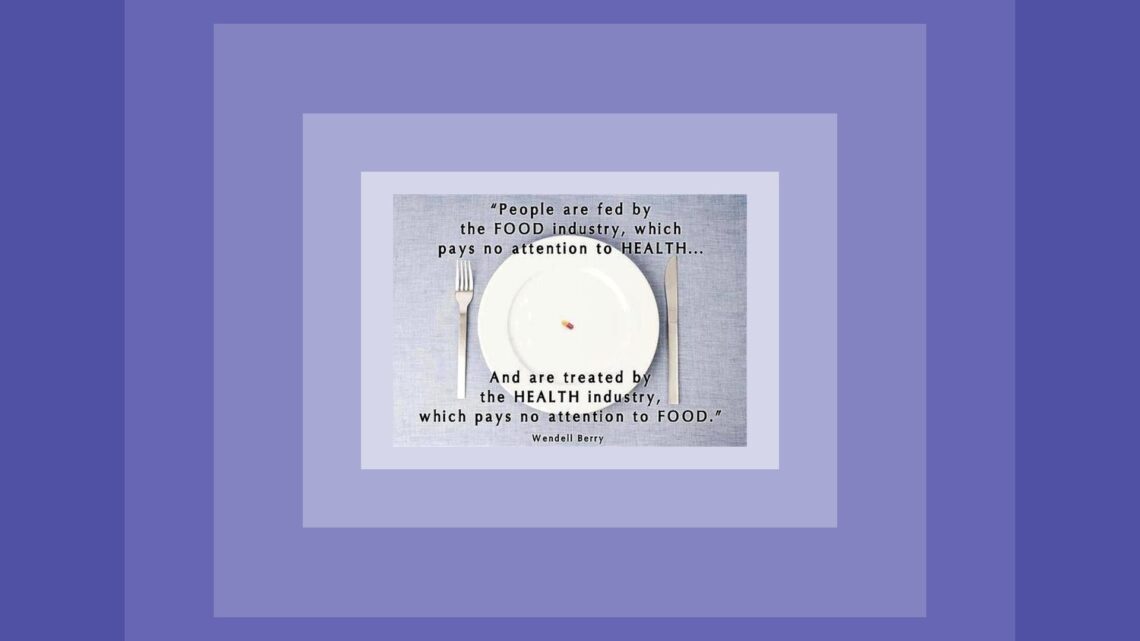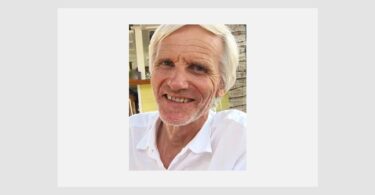A Quintessentially Western Epidemic
By all calculations, chronic disease is at an all time high – some might say it is the consequence of the trade off of childhood acute diseases combined with decades of suppressive pharmaceutical medicine, but whatever your theory of causation, one thing is certain – some chronic diseases have now reached epidemic proportions.
One disease state that’s currently rampant in the West is malnutrition and all its ramifications, the most obvious being obesity – the direct result of the Standard American Diet (SAD); too much food and not enough nutrition. SAD consists of calorie dense, nutrient poor, processed foods that are now the staple of the (so-called) developed world.
According to the US Center for Disease Control, one third of US children are classed as overweight and almost half that number are diagnosed as obese. Obesity rates for adults are increasing across both genders and all income and education levels, with even higher rates for African and Mexican Americans. Prime time television ads for bariatric surgery run alongside advertising for junk foods and the latest get-thin-quick fad from the multi-billion dollar diet industry. Add in the media’s pressure for the ‘ideal’ body and most women (and increasingly men) will spend much of their adult life attempting, and largely failing, to manage their weight. (refs 1, 2)
Big Food has happily provided low-fat versions of every processed food on the market – sometimes to the complete exclusion of a full-fat version – and yet the rate of heart disease continues to rise and the rate of obesity is higher than it has ever been.
The list of diseases associated with obesity includes all the leading causes of preventable death: heart disease, stroke, type 2 diabetes and some cancers, in addition to the ongoing joint, breathing and gastric problems, to name just a few. The annual cost to the economy, the workforce and individual families runs into hundreds of billions of dollars.
Insidiously this has somehow become the norm. The staff of any general medical practice and most hospital departments reflect the same rates of obesity as the general population and it no longer surprises us. The medical profession, largely trained in only the most basic concepts of nutrition, is ill-equipped for dealing with this epidemic and falls back on the same misconceptions as the diet industry itself – that fat makes us fat, cholesterol is directly responsible for cardiac disease and low-fat foods are the answer.
As Marcellus observed in Shakespeare’s Hamlet, “Something is rotten in the state of Denmark.”
Science or ‘science’
We know from firsthand experience that independent science is a rare commodity these days and what passes for ‘science’ is dictated by politics, or profit, or both. The misconception about the cause of the current obesity epidemic is (finally) being exposed for what it is – a largely political move on behalf of sugar industry lobbyists who, using flawed science, drew a straight line between saturated fats and heart disease and gave birth to the multi-billion dollar era of low-fat foods.
The work of UK Professor John Rudkinand and his identification of sugar as the culprit for metabolic disruption, weight management difficulties and potentially an increased risk of heart disease, has been suppressed for more than forty years. (ref 3)
The end of fat’s bad rap
When the fat naturally present in foods is extracted, the food loses its ‘satisfaction quotient’ and begins to taste like cardboard. Enormous amounts of highly addictive sugar in all its forms are then needed to make the food palatable again. The sugar industry created a ‘problem’,‘solved it’ and jacked up their bottom line.
The public loved the new low-fat foods but gradually found they were eating more and finding it harder to stop as they struggled with metabolic disorders and the related hormonal shifts. In short, the disruption to their biochemistry compounded the problem.
In this scenario, no amount of willpower is enough – the body craves sugar in all its forms like a heroin addict craves a fix. Suddenly even small children were behaving like drug addicts, having emotional melt-downs when a parent refused to supply the sweet stuff. In the search to satisfy the appetite for sugar, the consumption of carbs went through the roof. The industrial production of High Fructose Corn Syrup (HFCS) (more politics) made it Big Food’s sweetener of choice. Sweeter and cheaper than other forms of sugar, it is currently one of the main sources of calories for most of the US population. Present in virtually all processed foods from pizza to pickles and breakfast cereals to low-fat yogurt, it has recently been identified as the causative factor of non-alcoholic fatty liver disease, a serious chronic disease affecting between 20-30% of all Americans. (ref 4, 5)
The artificial sweeteners arrived, promising to supply the sweet fix without the worry of calories and instead brought further disruption to metabolism. As far as the body is concerned a sweet taste means a rise in blood glucose and a need for insulin release. In the absence of glucose, blood sugar levels crash and hypoglycemia ensues, triggering the search for a quick carbohydrate fix. The body actually begins to work against itself, sensitivity to the appetite regulating hormones leptin and ghrelin is lost and the appetite is soon out of control. (ref 6)
Diets don’t work – ever

A calorie is not a calorie, as not all calories are created equal and the medical profession, along with much of the diet industry, seems to have lost connection with the fact that we create our body from the food we eat – if we eat low quality food laced with chemicals, at best we can create a low quality, toxic body.
We have traded healthy fats for a sugar addiction, despite knowing the consequences of that addiction; insulin resistance, metabolic syndrome, type 2 diabetes, some cancers and of course, obesity. Lipitor is the best selling drug of all time despite the fact that our brain needs fat – cholesterol is the starting place for production of every hormone, every cell in the body NEEDS cholesterol to maintain its integrity.
As they say in the US: duhhhh!
‘The obese just need to pull up their socks – if only they could reach them.’
It’s easy to look at obese people and claim they are not trying hard enough, as they are constantly grazing, seem to have no will power and just need to get a grip. But if we understand the biochemistry and how disrupted it is by a sugar heavy SAD and in particular by HFCS and artificial sweeteners like aspartame, we realize that this is not about willpower, it’s about the evolutionary biochemical struggle for survival. Mechanisms developed over millennia – unable to differentiate a famine from a nutrient deficient diet –kick into action.
The hormones controlling appetite: leptin, which suppresses appetite, and ghrelin, which increases appetite, are disrupted by the SAD and poorly controlled blood sugar, leading to leptin resistance and a disconnection from the signals of ghrelin. We never feel satisfied and we always feel hungry, right down at the biochemical level.
If the food we eat is lacking in essential nutrients it makes sense that the signals to eat more, in an effort to satisfy that essential need, are irresistible. Diets don’t work and the more extreme they are, the less they work in the long term and are not sustainable. That evolutionary need to survive overrules all the intellectual knowing in the world.
Deprivation of nutrients in the womb, even when calories are plentiful, set epigenetic changes in process that can affect the person for a lifetime. As developing nations follow in the footsteps of the SAD, we see a shift in the pattern of their diseases.
Hahnemann’s rampant indisposition
The tragedy is an incredible irony. If we look at The Organon, Aphorism 77 and a statement by the US Centers for Disease Control and Prevention, we see they are both in agreement. What we are dealing with is Hahnemann’s “indisposition” – not a true chronic disease but the result of lifestyle habits, which if removed would allow a spontaneous return to health. In his definition of indisposition Hahnemann specifically listed: “habitually partaking of harmful food and drink; prolonged deprivation of things that are necessary for life and lack of exercise.”In 2009 The Centers for Disease Control and Prevention concluded that: “American society has become ‘obesogenic,’ characterized by environments that promote increased food intake, non-healthful foods, and physical inactivity.” Who would have thought – Hahnemann and the CDC – on the same page! (ref 7)
The exciting thing, as we also know from Aphorism 77, is that removing the obstacles to cure returns the patient to health. Of course we need to take into account the underlying susceptibilities of each patient but there is much that can be achieved immediately, simply by addressing this indisposition. How we actually deal with it in our practice however, is another matter and begs a question.
Are we homeopaths or are we holistic health practitioners?
As homeopaths how do we deal with patients presenting with primary symptoms related to obesity, where the obesity can be considered the “maintaining cause/obstacle to cure”?
Can we prescribe the indicated remedy and expect underlying issues to resolve without addressing the potential obstacle to cure? In response to the indicated remedy, will our patient decide to give up junk food and work out a new healthy eating program for themselves?
The remedy isn’t everything
Those of us who have worked out in the field where simple poverty restricts nutrition, know that in the absence of essential nutrients, the remedy can only do so much. I suggest that those who work in busy urban clinics in much of the developed world now also face essentially the same issue, but here it is too much food and not enough nutrition. Malnutrition in times of plenty.
One thing we can be sure of is that if our patients are pro-active in their own healing, if they understand the bigger picture and what they can contribute to the effort, they are empowered and engaged and much more likely to stay committed. It’s good for the patient and much more satisfying for us as practitioners.
Vitality TV was created to make the concepts of a homeopathic understanding of health accessible, providing the kind of education we would like our patients to have but, in our busy practice, rarely have time to deliver. It is Vitality TV’s belief that if people have clear and accurate information then they will make healthy choices for themselves.
At Vitality TV we made a conscious decision to create a free, video-based, online health creation resource that can be used by homeopathic patients and the general public alike. The “Think” section introduces a definition of health that is wider than the one taught in medical schools. It empowers people with an understanding of susceptibility, discusses the mind-body connection, what is meant by dis-ease and why prevention is better than cure. There are also sections called Eat, Move and Chill and a Care section which looks at environmental issues. (The Feel section is coming soon).
Vitality TV is designed to allow practitioners to take the burden of patient education off their shoulders. Patients in turn can better understand their process, monitor their health concerns more effectively and be pro-active in their own healing.
Never diet again – Ever
In response to the obesity epidemic it seemed important to take this a step further, so we created The Vitality Programme, a specially structured 12-week healthy weight program based on the latest science behind the reasons for the current obesity epidemic. In the Programme we address the emotional triggers so often integral to over-eating and we take the user through the exact steps needed to reset their biochemistry so that hormones and their signals are working again. We make good nutrition and healthy eating interesting and more importantly sustainable. We expose the myth of the media’s ‘ideal body’ that keeps people in a state of dissatisfaction with themselves, enabling a person to fundamentally change their attitude to their body from one of fear to one of love and trust. We help them dig out and change the habits of a lifetime.
It’s an individualized health creation program, built on the understanding that when we are healthy our weight will take care of itself and in that regard it can be used by patients wanting to regain a healthy weight or by people interested in creating health for themselves.
Results from our testers have been exceptional – they have all reported weight loss, and for some of them significant weight loss (28 lbs and still losing). Maybe more importantly in terms of the long term benefits, they have reported an increased sense of self-awareness, better mood, better sleep, less stress, improved health measures such as lowered LDL cholesterol and lowered tri-glycerides. For those who have struggled with diets for many years, there is no guilt or feelings of failure – for when they go off track they recognize it and more importantly know how to get themselves back on.
They are active creators of an efficiently functioning vehicle that enables them to achieve their fullest potential.
If we teach a patient to ‘fish’, or in this case to create health, we teach the entire extended family, and in the process this can be an integral part of the paradigm shift so desperately needed in healthcare.
We like to think that Hahnemann would have approved.
References
1. http://www.cdc.gov/obesity/data/adult.html
2. Katherine M. Flegal; Margaret D. Carroll et al. Prevalence of Obesity and Trends in the Distribution of Body Mass Index Among US Adults, 1999-2010 JAMA. 2012;307(5):491-497
3. Geoff Watts Sugar and the heart: old ideas revisited BMJ 2013; 346 (Published 15 January 2013) http://www.bmj.com/content/346/bmj.e7800
4. Ouyang X. et al. Fructose consumption as a risk factor for non-alcoholic fatty liver disease. J Hepatol. 2008 Jun;48(6):993-9.
5. Hilary Parker A sweet problem: Princeton researchers find that high-fructose corn syrup prompts considerably more weight gain March 22, 2010: http://www.princeton.edu/main/news/archive/S26/91/22K07/
6. David S. Ludwig, MD, PhD. Artificially Sweetened Beverages – Cause for Concern JAMA. 2009;302(22):2477-2478
7.National Collaborative on Childhood Obesity Research. The Future Costs of Obesity; Page 2 http://www.nccor.org/downloads/CostofObesityReport-FINAL.pdf
Links:
Vitality TV : http://VitalityTV.com
The Vitality Programme : http://www.vitalitytv.com/tvp-homeopaths
Making a Difference: http://WholeHealthNow.com/world
Documentary films: http://www.somethingtosayproductions.com
Homeoversity homeopathic philosophy course: http://www.hstudy.de/frontend1/index_9_~.html






A very interesting article Carol and a brave move, but I’m afraid I don’t buy what you refer to as an indisposition. If all the health threats people living in industrialised societies had to face was a food industry that denatures much of what we eat, a return to simpler, unprocessed food might lead to a return to health, as there might have been in the past when families were removed from damp slum dwellings to new council housing after the last world war. But is that the sum total of what is at play in the overconsumption of denatured food?
I’m not sure how many vaccinations a baby gets nowadays and so soon after birth, but I know that it is far too many. I accept what Compton Burnett claimed over a century ago when he said that in many of those vaccinated but whose vaccination didn’t ‘take’ a disease was established that was indistinguishable from sycosis. I believe that as a consequence of the massive increase in vaccination and other societal factors too complicated to go into here, we are seeing a corresponding massive increase in sycotic disease.
If what you refer to as ‘big food’ stops producing its latest ‘I can’t believe it’s not’…. something or other, would that automatically result in an end to addictions and a return to general health? I tend to suspect not and I tend to feel that anyone accepting Hahnemann’s miasmatic theory would agree, for it is clear that far more than mere indisposition is at play here. For addiction to empty calories is one relatively modern addiction that looks very much like just another manifestation of sycosis. There really are so many alternative addictions freely available, be they alcohol, drugs, sex, or even self help books to which people become enslaved with or without help from large food corporations.
I have no love of the food industry, but believe it is at least arguable that all they are doing is allowing people to follow their cravings but with a false sense of freedom from guilt, and in many cases with encouragement from complicit governments whose medical advisers simply fail to understand the implications of what they advise. I certainly know many homoeopaths who whilst detesting large food corporations still give in to cravings for alcohol, for coffee or chocolate or still in some cases to cigarettes. For as homoeopaths whilst we might recognise the wellsprings of cravings for what they are, ultimately we may be no freer than anyone else in society. The influence of the miasms is all pervasive even amongst those of us who recognise the damage that ultimately they inflict.
Hi Kevin,
Thanks for reading the article and for your lengthy well explained comments.
Your point is well taken and my mistake if I didn’t make my own line clearly enough. I was looking at Hahnemann’s definition of Indisposition in Aph 77 of The Organon. The idea that many symptoms expressed by patients and diagnosed within the current medical culture as chronic diseases are strictly speaking nothing more than indispositions. If we take away the constant exposure to avoidable noxious factors then health returns spontaneously with the caveat of course: ” provided there is no chronic miasma present in the body.”
We have no disagreement in terms of misamatic influence in the population at large – it’s a given – what I was arguing for is that take away the obstacle to cure that is junk food and switch to a nutrient dense diet and much of what is complained about in those terms by the patient resolves to a large extent – there is the opportunity for the biochemistry / metabolism to reset and the system to function more efficiently – so that given miasmatic treatment the opportunity for transformation is that much more likely. Recognise and remove obstacles to cure as a mainstay of Hahnemannian case taking.
No argument either about the complexity of the disease process nowadays with assaults on the immune system from an infant’s first day out of the womb. At every level and in every way most of the population of the West at least, are exposed to a constant stream of negative stimuli – from the food they eat, the pharmaceuticals they take, the air they breathe, EMFs, the loss of social interaction – on and on – it’s a testimony – as far as I am concerned – to the human form that any of us survive to adulthood!
Which comes first – the chicken or the egg is an interesting one – of course always the individual susceptibility is crucial – but does an addiction to junk food come before exposure to junk food or afterwards given the easy availability of it, the low (relative) cost of it, the devastating effect it has on the metabolism and therefore the hormones controlling appetite and satiety – the sugar lobbyists and the adulteration, with lack of labelling, of even simple foodstuffs that we can no longer depend on. It has been suggested that there is a deliberate attempt by Big Food to create an addiction to junk food (similar to Big Tobacco and cigarettes) and from where I stand, a case could be made. At the very least the negative health consequences of processed / junk food is hidden (like tobacco was) with small children fed addictive substances as soon as – and in some cases before – they are weaned – and that addiction fostered in childhood ‘nurtured’ throughout life. If I disagree on one point it’s that I don’t think Big Food makes processed foods in response to our addictive cravings for processed food – that would be to deny the history of the food industry.
Great article thank you Carol – this is a very important point that you raise. I understand what you’re saying about those on a low income struggling to afford nutritionally dense foods. Even those in a higher income bracket may have little money left over for food once all essential payments have been made.
Bone broth is an example of an affordable and highly nutritious food however and I think that more information is needed regarding sprouting, micro-greens and gardening in pots so that highly nutritious greens can also be added to the diet. In order to help our clients overcome complex health issues that often have an overlay of multiple prescription medicines – a grounding in nutrition and real food is very helpful.
Hi Jill,
Thanks for reading the article and for your contribution. I totally agree with you and remember my own childhood fighting with my sister for the marrow bone! (And I say this as a 30+ year vegetarian :-))
Yes re growing greens, sprouting etc so many ways to get essential nutrients into the diet very inexpensively. We need to begin in school, teaching young children to grow their own food. All the schools I know who have gardens tended by pupils grow amazing things and the students involved are always wowed by a) finding out where their food really comes from and b) discovering that ‘real’ food tastes so much better once they have retrained their taste buds away from sugar, fat and salt. As we know it’s not rocket science but the political will to make it happen is harder to find.